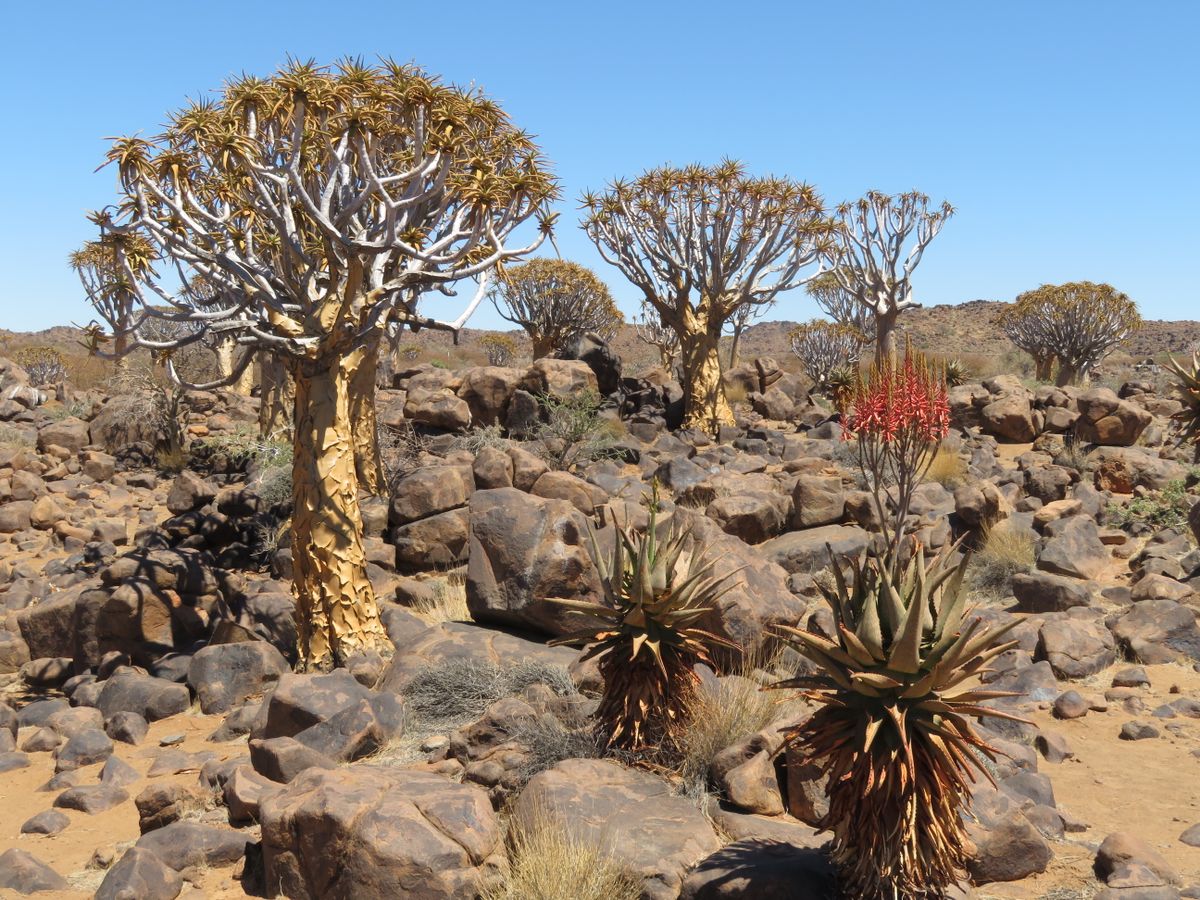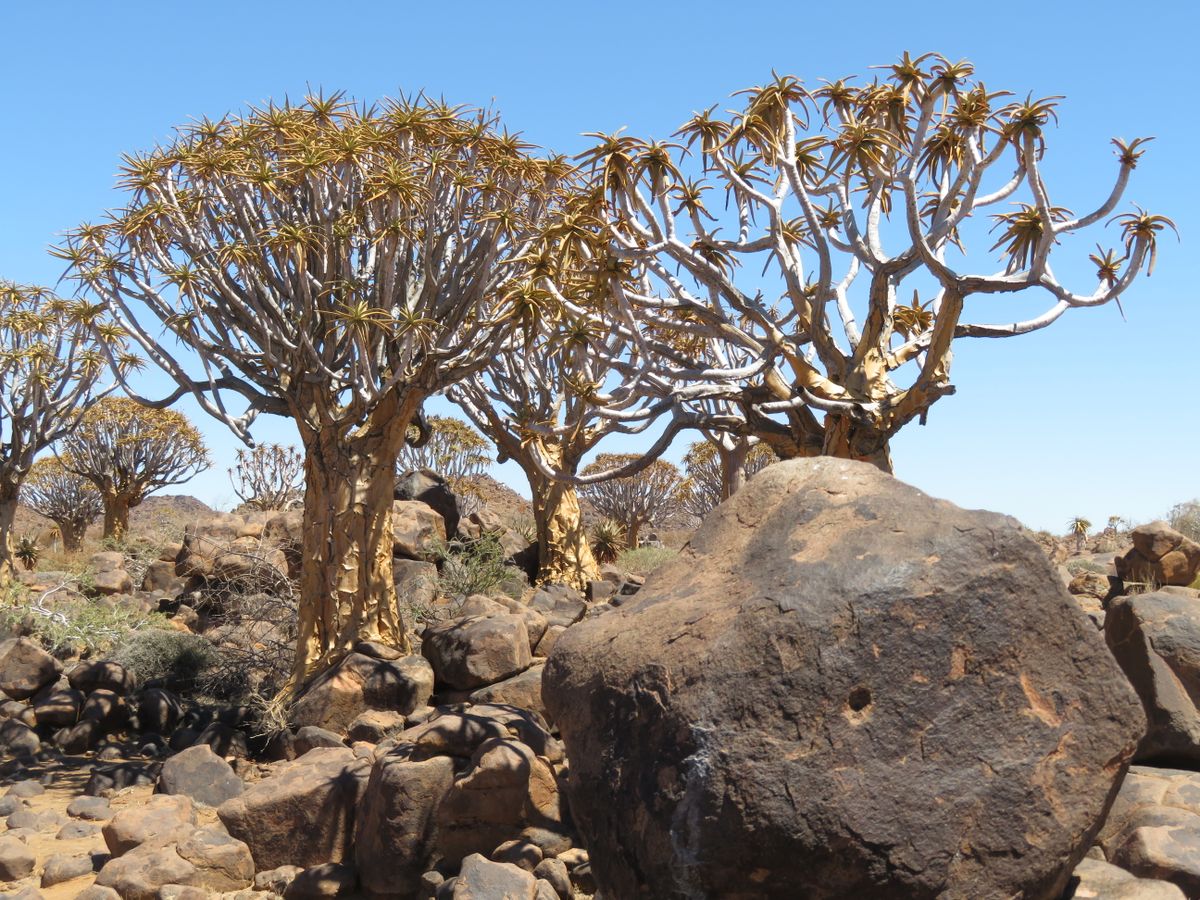About
Because these wonky plants prefer to grow almost exclusively atop medium-to-large dolerite rock formations, they normally grow great distances from each other. But in a small rocky pocket outside of Keetmanshoop, a large number of them grow in uncharacteristically close proximity, creating a forest-like landscape. It’s one of the only known naturally occurring such sites in the world.
Despite its name, the Quiver Tree (Aloidendron dichotomum) is not a true tree, but rather a species of Aloe capable of growing over 30 feet tall. Declared a National Monument of Namibia on June 1, 1995, the Quiver Tree Forest has been privately owned by Coenie and Ingrid Nolte since 1990. The two operate a working farm and guesthouse adjacent to the forest and permit travelers to hike around the property, even offering the occasional night tour.
All of the trees in the forest are naturally occurring and self-propagating. You’ll find young trees growing out of rock crevasses, and the oldest trees in the forest are estimated to be between 200 and 300 years old. The unusual micro-ecosystem this forest creates also attracts a surprising abundance of wildlife, most notably a large population of rock hyrax, which hikers will almost certainly find (or hear) scurrying among the rocks.
The plants are as culturally important as they are interesting to admire. They’re regarded as a national symbol of Namibia and are featured on the currency and in popular imagery. Traditional medicine uses the plants’ roots to treat both asthma and tuberculosis. The Quiver Tree takes its name from its Afrikaans name, Kokerboom, which is a reference to the indigenous San peoples’ practice of hollowing out the tubular branches to make quivers for their arrows (they’re known as choje in the San language).
The trees are scientifically fascinating, too. Their bark is covered in a white powdery substance that's used to reflect much of the sun’s heat. The plants are also capable of a rare botanical practice known as self-amputation, which allows them to shed diseased limbs to prevent sudden infections from spreading and remove extra limbs in times of drought.
Related Tags
Know Before You Go
The Quiver Tree Forest is a safe place to hike. The best time to visit is between June and July, when the trees are flowering. But be aware that you are hiking in a naturally occurring, rocky space. It is best to wear boots or at the least, closed-toed shoes. Be careful of your footing and watch for snakes. Also, be aware of the intense daytime heat and sun exposure. Wear sunscreen, don a hat, and bring a water bottle to stave off heat stroke and sunburn. Entrance ticket also includes access to Giant's Playground which is owned by the same owners. It is not possible to buy tickets separately.
Community Contributors
Added By
Published
March 22, 2019
Sources
- QuiverTreeForest.com
- "A Changing Climate is Eroding the Geographic Range of the Namib Desert tree Aloe through population declines and dispersal lags". By W. Foden et al. Published in The Journal of Diversity and Distribution (2007)
- "The Quiver Tree - Symbol of the South". published digitally on Gondwana-Collection.com (August 2016)
- "A Visit to a Kokerboom Forest". published digitally on AfricaGeographic.com (November 2016)





































































































